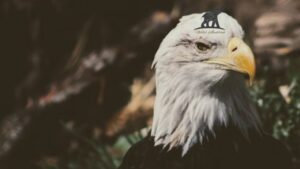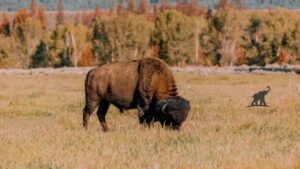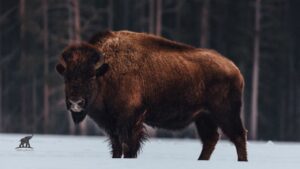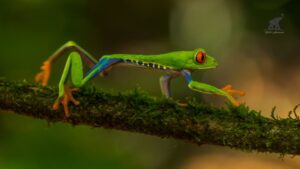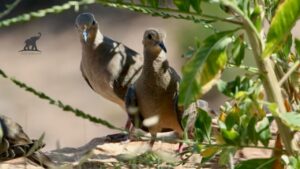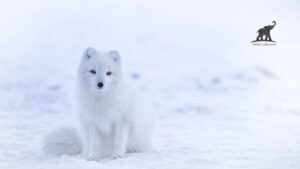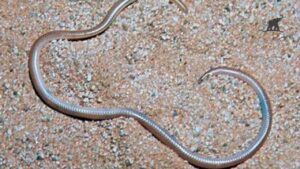It can be adorable to see a fledgling house sparrow hopping around your yard! Bird enthusiasts have a lot of questions about these feathered, small birds as they transition into life outside the nest. How do you handle their care? Should you help them? The fascinating life of the house sparrow fledgling will be discussed in detail here. From their unique characteristics to care tips, by the end of this guide, you’ll feel confident about understanding these young birds and their place in nature.
Quick Overview of House Sparrow Fledgling
| Characteristic | Details |
| Species Name | House Sparrow (Passer domesticus) |
| Fledgling Age | 12–18 days old |
| Physical Appearance | Fluffy, soft feathers; short tails; stubby wings |
| Diet | Seeds, grains, insects, and, initially, food regurgitated by parents |
| Habitat | Urban areas, gardens, parks, and city outskirts |
| Common Behavior | Hopping rather than flying; chirping to call for parents |
| Parent Dependency | Relies on parents for food up to 1–2 weeks after leaving the nest |
| Conservation Status | Least concern globally but declining in certain regions (e.g., the UK) |
What is a House Sparrow Fledgling?
A fledgling house sparrow is a young bird that just left the nest and is learning how to live on its own. Fledglings are neither entirely dependent nor entirely self-sufficient at this stage. To be able to fly and forage on their own, they are actively developing their strength and coordination.
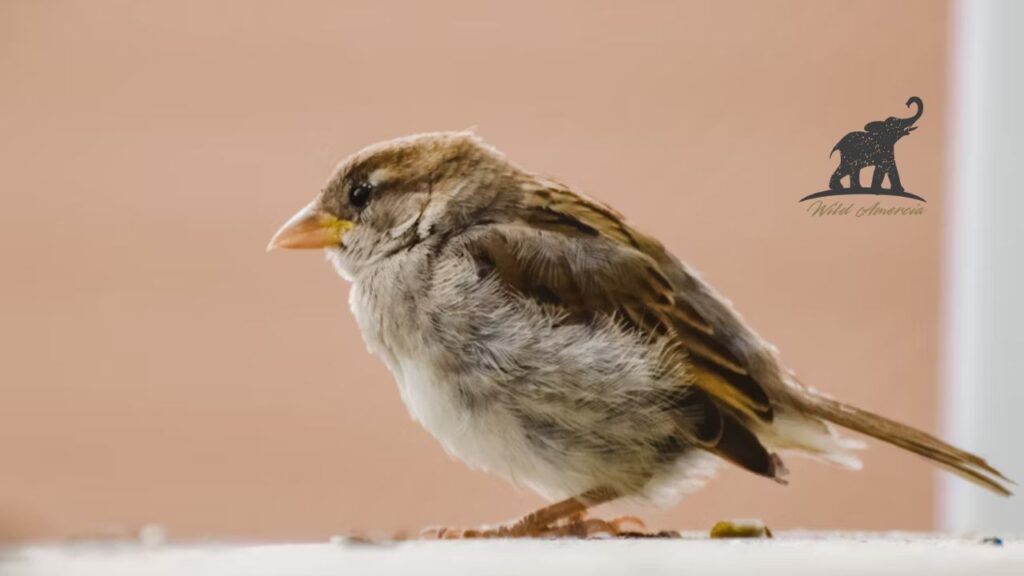
Because they are seen hopping around on the ground and seem unsteady, these fledglings are frequently mistaken for orphans. However, the majority of the time, the parents are nearby and watching!
How to Identify a House Sparrow Fledgling
House sparrow fledglings are easy to identify due to their distinct features:
- Incomplete Flight Feathers: Their wings are not yet strong enough for sustained flight.
- Soft Plumage: Fuzzy, down-like feathers that give them a slightly puffed-up appearance.
- Stubby Beak: Their beak looks shorter and slightly yellow at the edges, a sign of immaturity.
- Behavior: Frequent chirping and limited flying, paired with clumsy movements.
Growth Stages of a House Sparrow
To understand fledglings better, it’s worth knowing the growth phases of house sparrows:
- Hatchlings (0–3 days) – Naked and completely dependent on parents.
- Nestlings (3–12 days) – Start growing feathers but remain in the nest.
- Fledglings (12–18 days) – Leave the nest, preparing for independent life.
Can You Help a House Sparrow Fledgling?
It’s natural to want to assist these vulnerable birds, but it’s vital to assess the situation first. Most fledglings don’t need human help. However, here are some guidelines:
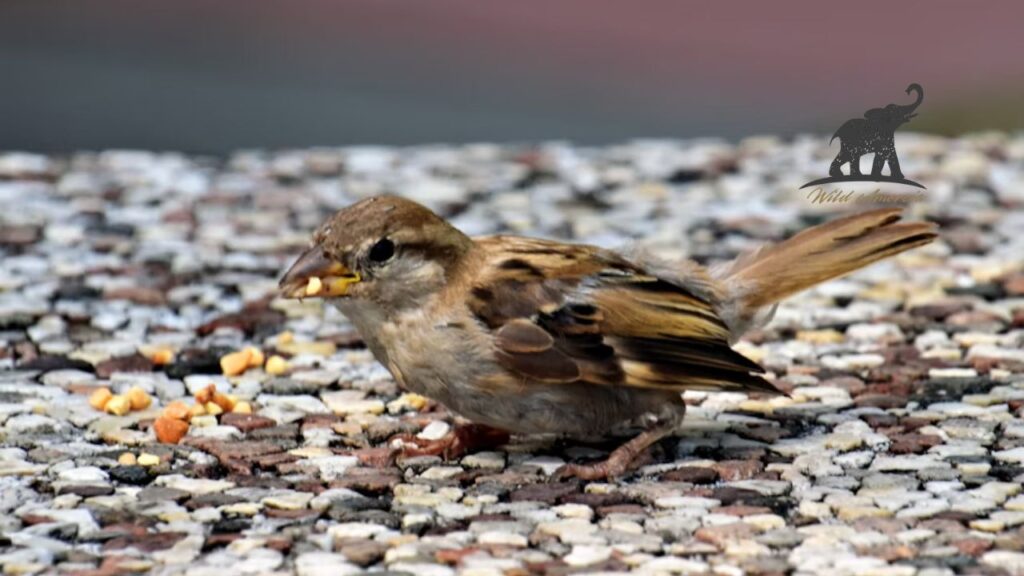
When You Shouldn’t Intervene
- If Parents Are Nearby – Watch from a distance. If the fledgling is chirping and the parents are responding, everything is fine.
- Hopping Around Normally – Fledglings often hop rather than fly as they master essential skills.
When You Should Step In
- Visible Injury – If you spot blood or a broken wing, it’s best to contact a wildlife rehabilitator.
- Immediate Danger – Move the bird to a safe, nearby spot if predators (cats, dogs) are present.
- Truly Abandoned – If after hours there’s no sign of parents, it might require human assistance.
How to Provide Temporary Help
- Avoid Feeding – Instead, call a local bird rescue center for advice. Improper diets can harm fledglings.
- Warmth and Comfort – If needed, place the bird in a small ventilated container lined with soft paper towels.
Observing House Sparrow Fledglings in Nature
House sparrow fledglings thrive in a variety of environments. They’re typically found:
- Near Buildings – House sparrows often nest in crevices or under eaves.
- Gardens and Parks – They forage for seeds and insects on open ground.
- Urban Areas – These adaptable birds flourish even in bustling cities.
If you are lucky, you might spot a fledgling during spring or summer–the peak breeding seasons for house sparrows.
Fun Facts About House Sparrow Fledglings
- Fast Learners – Fledglings master flying within a few days of leaving the nest.
- Close Family Bonds – Parents continue feeding their fledglings up to two weeks after fledging.
- Playful Chirps – Their constant chirping strengthens bonds with their parents.
What People Are Saying About House Sparrows
Avid birdwatchers adore these tiny creatures. Here are a few real-life reviews from enthusiasts:
- “Watching house sparrow fledglings hop around makes my mornings brighter.”
- “I love how nature provides—seeing sparrow fledglings is such a treat!”
- “I worried about one fledgling in my garden. Turns out, the parents weren’t far!”
FAQs About House Sparrow Fledglings
- What do house sparrow fledglings eat?
Fledglings are primarily fed by their parents, who regurgitate insects and seeds. After a week or two, they begin to forage on their own.
2. Should I put a house sparrow fledgling back in the nest?
No. Once a bird has fledged, it doesn’t usually return to the nest. Putting it back may confuse the parents.
3. How long do fledglings rely on their parents?
Most house sparrow fledglings depend on their parents for food and protection for 1–2 weeks after fledging.
4. Are fledglings at risk in urban areas?
While urban environments have challenges like predators and cars, house sparrows adapt well and are resourceful in such settings.
Final Thoughts on House Sparrow Fledglings
Fledgling house sparrows are a symbol of nature’s tender but resilient side. We learn from these young birds how important it is to be patient, grow, and survive. Whether you are merely observing them or acting responsibly to assist, it is a privilege to watch their lives unfold. Next time you encounter a house sparrow fledgling, take a moment to appreciate how these tiny creatures contribute to Earth’s vibrant biodiversity.
Admin Recommendation
Cottonmouth Snakes in North Carolina (NC): Key Facts
The Fascinating World of Arctic Fox Fur
Experience the Majesty of Elk and Bison Prairie, KY
Cottonmouth Snakes in North Carolina (NC): Key Facts
Bald Eagle Spiritual Meaning: A Guide to Symbolism and Significance
The Appealing Charm of Ragdoll Kittens
Where to Find Arctic Fox Fur in AC Valhalla
The Barbados Threadsnake: Unveiling the World’s Smallest Snake
American Eskimo Dog: A Comprehensive Guide to This Charming Breed
Discovering Acadia National Park Wildlife
Spotted Salamanders: Nature’s Hidden Gems
Baby American Crocodile: Fascinating Facts About The Next Generation
The Fascinating World of the Albino Wild Turkey
American Bulldog puppies: Full of life, loveable and loyal
Baffin Polar Bear: A Journey into the Arctic’s White Majesty
NC Copperhead Snake: A Comprehensive Guide
Mojave Desert Rattlesnake—A Deadly Beauty of the Southwest
Mourning Dove Lifespan, Care, and Diet Guide



